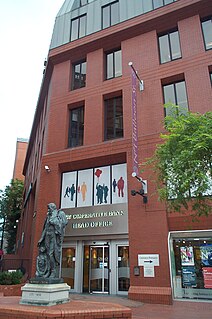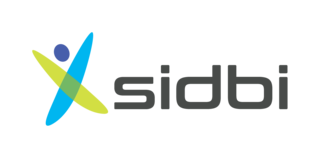
Microcredit is the extension of very small loans (microloans) to impoverished borrowers who typically lack collateral, steady employment, or a verifiable credit history. It is designed to support entrepreneurship and alleviate poverty. Many recipients are illiterate, and therefore unable to complete paperwork required to get conventional loans. As of 2009 an estimated 74 million people held microloans that totaled US$38 billion. Grameen Bank reports that repayment success rates are between 95 and 98 percent.

Microfinance is a category of financial services targeting individuals and small businesses who lack access to conventional banking and related services. Microfinance includes microcredit, the provision of small loans to poor clients; savings and checking accounts; microinsurance; and payment systems, among other services. Microfinance services are designed to reach excluded customers, usually poorer population segments, possibly socially marginalized, or geographically more isolated, and to help them become self-sufficient.

Cooperative banking is retail and commercial banking organized on a cooperative basis. Cooperative banking institutions take deposits and lend money in most parts of the world.

Small Industries Development Bank of India (SIDBI) is the apex regulatory body for overall licensing and regulation of micro, small and medium enterprise finance companies in India. It is under the jurisdiction of Ministry of Finance, Government of India headquartered at Lucknow and having its offices all over the country. Its purpose is to provide refinance facilities to banks and financial institutions and engage in term lending and working capital finance to industries, and serves as the principal financial institution in the Micro, Small and Medium Enterprises (MSME) sector. SIDBI also coordinates the functions of institutions engaged in similar activities. It was established on 2 April 1990, through an Act of Parliament. SIDBI is one of the four All India Financial Institutions regulated and supervised by the Reserve Bank of India; other three are India Exim Bank, NABARD and NHB. But recently NHB came under government control by taking more than 51% stake. They play a statutory role in the financial markets through credit extension and refinancing operation activities and cater to the long-term financing needs of the industrial sector.
Village banking is a microcredit methodology whereby financial services are administered locally rather than centralized in a formal bank. Village banking has its roots in ancient cultures and was most recently adopted for use by micro-finance institutions (MFIs) as a way to control costs. Early MFI village banking methods were innovated by Grameen Bank and then later developed by groups such as FINCA International founder John Hatch. Among US-based non-profit agencies there are at least 31 microfinance institutions (MFIs) that have collectively created over 800 village banking programs in at least 90 countries. And in many of these countries there are host-country MFIs—sometimes dozens—that are village banking practitioners as well.
Friends of Women's World Banking, India, often shortened to Friends of WWB, India, or just FWWB, is an Indian APEX organization that assists microfinance and microenterprise organizations. Founded in 1982 by Ela Bhatt, it is located in Ahmedabad, Gujarat, India.

Bharat Financial Inclusion LimitedBFIL is a banking & finance company (NBFC), licensed by the Reserve Bank of India. It was founded in 1997 by Vikram Akula, who serve as its executive chair until working. The company's mission is to provide financial services to the poor under the premis that providing financial service to poor borowers helps to alleviate poverty. In 2011, the company operated across 11 Indian state.

A self-help group is a financial intermediary committee usually composed of 12 to 25 local women between the ages of 18 and 50. Most self-help groups are in India, though they can be found in other countries, especially in South Asia and Southeast Asia. A SHG is generally a group of people who work on daily wages who form a loose grouping or union. Money is collected from those who are able to donate and given to members in need.
Bangladesh is a developing country with an impoverished banking system, particularly in terms of the services and customer care provided by the government run banks. In recent times, private banks are trying to imitate the banking structure of the more developed countries, but this attempt is often foiled by inexpert or politically motivated government policies executed by the central bank of Bangladesh, Bangladesh Bank. The outcome is a banking system fostering corruption and illegal monetary activities/laundering etc. by the politically powerful and criminals, while at the same time making the attainment of services or the performance of international transactions difficult for the ordinary citizens, students studying abroad or through distance learning, general customers etc.
Financial inclusion is defined as the availability and equality of opportunities to access financial services. It refers to a process by which individuals and businesses can access appropriate, affordable, and timely financial products and services. These include banking, loan, equity, and insurance products. Financial inclusion efforts typically target those who are unbanked and underbanked, and directs sustainable financial services to them. Financial inclusion is understood to go beyond merely opening a bank account. It is possible for banked individuals to be excluded from financial services. Having more inclusive financial systems has been linked to stronger and more sustainable economic growth and development and thus achieving financial inclusion has become a priority for many countries across the globe.
Non-Banking Financial Company (NBFC) is a company registered under the Companies Act, 1956 of India, engaged in the business of loans and advances, acquisition of shares, stock, bonds, hire-purchase insurance business or chit-fund business, but does not include any institution whose principal business is that of agriculture, industrial activity, purchase or sale of any goods or providing any services and sale/purchase/construction of immovable property.
External commercial borrowing (ECBs) are loans in India made by non-resident lenders in foreign currency to Indian borrowers. They are used widely in India to facilitate access to foreign money by Indian corporations and PSUs. ECBs include commercial bank loans, buyers' credit, suppliers' credit, securitised instruments such as floating rate notes and fixed rate bonds etc., credit from official export credit agencies and commercial borrowings from the private sector window of multilateral financial Institutions such as International Finance Corporation (Washington), ADB, AFIC, CDC, etc. ECBs cannot be used for investment in stock market or speculation in real estate. The DEA, Ministry of Finance, Government of India along with Reserve Bank of India, monitors and regulates ECB guidelines and policies.

Women's World Banking is a nonprofit organization that provides strategic support, technical assistance and information to a global network of 55 independent microfinance institutions (MFIs) and banks that offer credit and other financial services to low-income entrepreneurs in the developing world, with a particular focus on women. The Women's World Banking network serves 24 million micro-entrepreneurs in 32 countries worldwide, of which 80 percent are women. It is the largest global network of microfinance institutions and banks in terms of number of clients, and the only one that explicitly designates poor women as the focus of its mission.
Angkor Mikroheranhvatho (Kampuchea) Co., also known as AMK, is a registered microfinance institution (MFI) headquartered in Phnom Penh, Cambodia with over 280,000 active borrowers. AMK is the largest provider of credit in Cambodia in terms of borrower numbers and has branches in 23 provinces and Phnom Penh city. It has over 10,000 active savers and over 1,000 employees. AMK provides several microfinance services, including microcredit, microsavings, and mobile money transfers.
Bandhan Bank Ltd. is a banking and financial services company, headquartered in Kolkata. Bandhan Bank is present in 34 out of 36 states and union territories of India, with 5,639 banking outlets and more than 2.63 crore customers. Having received the universal banking licence from the Reserve Bank of India, Bandhan Bank started operations on August 23, 2015, with 501 branches, 50 ATMs and 2,022 Banking Units (BUs). The Bank has mobilised deposits of over ₹96,331 crore and its total advances stand at over ₹99,338 crore as of March 31, 2022.
Micro Units Development and Refinance Agency Bank ) is a public sector financial institution in India. It provides loans at low rates to micro-finance institutions and non-banking financial institutions which then provide credit to MSMEs. It was launched by Prime Minister Narendra Modi on 8 April 2015.
Microfinance in Kenya consists of microfinance facilities and regulations in Kenya which has been developing since the mid 1990s. Legislation was passed in 2006 with the Micro Finance Act which became active in 2008. By 2010 there were more than twenty large micro finance institutions in Kenya, which provided US $1.5 billion to approximately 1.5 million active borrowers. With over 100,000 clients, Equity Bank Kenya had the largest share of business loans representing market share of 73.50% followed by Kenya Women Microfinance Bank with 12.06%. Most microfinance firms as in other countries have eligibility criteria which may include gender, age, a valid Kenyan ID, a business, an ability to repay the loan and be a customer of the institution.
An interest rate ceiling is a regulatory measure that prevents banks or other financial institutions from charging more than a certain level of interest.
The Uganda Microfinance Regulatory Authority (UMRA), is a government agency responsible for the licensing, supervision and regulation of Tier-4 micro finance institutions, money lenders, savings cooperatives and any money-lending institution with capital of less that USh500 million (US$140,000). Tier-4 institutions are those that do not accept financial deposits and are not under the supervision of the Bank of Uganda, the central bank and national banking regulator.

Village Financial Services Ltd (VFS), headquartered in Kolkata, was incorporated on 28 June 1994, as a private limited company over a decade before it got its present name.







